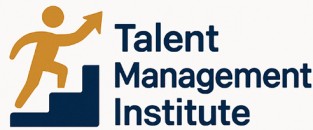
Understanding Billability in Talent Management
Decoding the Concept of Billability in Modern Talent Management
In today's business landscape, effectively managing billability is crucial for maximizing employee potential and driving organizational success. Billability refers to the measure of billable hours a professional services firm can charge to clients for client work. It is a vital component in resource management, directly impacting revenue and profitability.
Understanding billability begins with recognizing how billable work is categorized and recorded. Employees often juggle between various projects, requiring them to track not only the time they spend on billable tasks but also the utilization rate of their resources. The ability to efficiently track billable time is a leading factor in enhancing billability utilization rates across the organization.
- Tracking hours: Critical to determining how much time an employee spends on billable projects. By tracking the hours billable, managers can ascertain the accurate billable utilization of each team member.
- Setting hourly rates: The billable rate or hourly rate plays a role in evaluating profitability from each task. Accurate time tracking records can invoicing clients effectively.
- Utilization and projects: Balancing client projects with internal or non-billable activities requires careful planning and management to maintain high utilization rates.
- Utilizing tracking software: Effective tracking software is indispensable for monitoring time spent on different tasks and subsequently analyzing utilization patterns.
Maximizing billability is not just about recording hours. It's about understanding resource utilization to ensure every member of the team contributes to the organization's goals effectively. As the landscape evolves, integrating strategies that align billability with business objectives reinforces the positive impact on performance.
For further insights on how effective HR strategies can enhance employee engagement while optimizing billability, visit Talent Management Institute’s blog.
Strategies to Improve Billability
Boosting Efficiency with Smart Billability Practices
Improving billability is a critical endeavor for any business keen on maximizing revenue and optimizing resource management. Identifying strategies that effectively enhance billability requires a deep dive into various facets of professional services. Firstly, a focus on improving the utilization rate of your team is essential. This means ensuring that more of the time spent in the office is billable time. Encouraging better time management and clear task prioritization can assist in achieving higher utilization rates. It is often beneficial to evaluate current processes and identify areas where billable work could be increased. Consider implementing more stringent time tracking protocols. Utilizing dedicated tracking software can provide insight into billable tasks and client work, helping businesses to adjust course if utilization rates fall below expectations. This allows you to pinpoint non-billable activities and reassign resources more effectively. Another method is optimizing the balance of client projects. By examining each project's hourly rate and potential revenue, professionals can ensure they allocate resources to achieve a favorable billable utilization. Establishing a keen understanding of each project's demands helps in appropriately matching team members with the correct skill set to clients, maximizing both satisfaction and billability. The alignment of billability strategies with business objectives is equally crucial. Regularly assessing resource utilization alongside reviewing how teams spend their hours helps maintain a harmony between billable rates and strategic goals, while simultaneously enhancing overall project outcomes. By refining these tactics and consistently reflecting on business practices, organizations can improve their profitability and ensure that they make the most of their professional services. For further insights on keeping your collection team happy and productive, consider exploring effective ways to keep your collection team happy and productive.Balancing Billability with Employee Well-being
Striking the Right Balance Between Productivity and Well-being
Effective management of billability is not just about increasing the hours billed to clients or maximizing the utilization rate. It's crucial to consider the well-being of employees when striving to enhance billable work. A harmonious balance between productivity and employee satisfaction fosters a healthy work environment and long-term business success. To achieve this balance, management should focus on the following strategies:- Resource Management: Proper allocation and distribution of tasks among team members ensures that workloads are manageable. This helps in preventing burnout and maintaining efficient billability utilization.
- Flexible Work Policies: Offering flexible hours can contribute significantly to improved morale and productivity. Employees who can manage their schedules while delivering the required billable hours often experience reduced stress levels and increased satisfaction.
- Effective Time Tracking: Implementing robust time tracking software allows for accurate monitoring of time spent on client work. This enables teams to manage their time better, ensure fair distribution of billable tasks, and adjust workloads to protect employee well-being.
- Open Communication: Encouraging open dialogue about workloads and work-life balance can help identify any potential issues early. When employees feel heard, they are more likely to engage in billable projects enthusiastically, maintaining both their productivity and satisfaction.
Tools and Technologies for Tracking Billability
Optimizing Billability with Advanced Tools
In the realm of talent management, effective tracking of billable hours is pivotal for ensuring both high utilization rates and balanced workloads. Advanced tools and technologies for tracking billability align with these goals by optimizing the way organizations manage their time, tasks, and resources. The implementation of time tracking software is one of the most effective strategies for monitoring billable work within professional services environments. By accurately tracking time spent on client projects, businesses can not only ensure an accurate billing process but also gain actionable insights into resource utilization and overall project management. Some key features to look for in tracking software include:- User-friendly Interface: Ease of use is crucial when team members are expected to log hours consistently. A straightforward and intuitive interface reduces friction in time reporting.
- Detailed Reporting & Analytics: Data-driven insights into utilization rates and billability utilization are invaluable for identifying trends and areas for improvement. This also helps in understanding patterns related to billable time and revenue generations.
- Seamless Integration: The ability to integrate with existing project management or client relationship management systems enhances cohesion across business operations. This ensures all data, from billable hours to project tasks, is consolidated in one platform.
Case Studies: Successful Billability Management
Case Study: Innovative Approaches in Professional Services
In the world of professional services, maximizing billability is often viewed as the key to optimizing revenue. A notable case study involves a consulting firm that implemented a unique blend of strategies to enhance their team's utilization rates without compromising team well-being.
Initially, the firm focused on accurate time tracking. By adopting a new tracking software, they were able to meticulously log billable hours across various projects. This allowed project managers to have real-time insights into time spent on billable tasks versus non-billable activities, ensuring that team members were engaged in client work effectively.
Additionally, they refined their resource management strategies. Rather than allocating resources solely based on high billable utilization, they considered the overall workload and preparedness of their resources. This not only maintained high utilization rates, but also prevented burnout by allowing more balanced distribution of tasks.
Balancing Utilization and Well-being in Client Projects
Another compelling example is a digital agency that prioritized the well-being of their teams alongside achieving high utilization. By investing in employee wellness programs and recognizing the importance of downtime, they were able to enhance employee morale and, consequently, improve their billable rate.
The agency also segmented their teams based on skills and specializations. This ensured that client projects were matched with the right expertise, optimizing billable work and maintaining a high quality of service. These strategies illuminated the significance of aligning resource utilization with employee satisfaction to keep turnover low and engagement high.
Leveraging Technology for Transparent Tracking
An IT company was able to boost their billability by employing advanced technology for tracking billable and non-billable time. By implementing a comprehensive dashboard, both managers and team members could visualize hours billable at any given moment. This facilitated informed decision-making and strategic adjustments to improve billability utilization.
These case studies demonstrate that successful billability management often involves a multifaceted approach, incorporating resource management, enhanced tracking methodologies, and a focus on maintaining a healthy work-life balance for employees.
Future Trends in Billability and Talent Management
Emerging Trends in Billability and Talent Management
As businesses continue to evolve, so do the strategies surrounding billability and talent management. The future holds several promising trends that could reshape how organizations approach these critical areas. Understanding these trends can help businesses stay ahead of the curve and maximize their resources effectively.
Increased Focus on Flexible Work Arrangements
With the rise of remote work and flexible schedules, companies are rethinking how they track billable hours and manage resources. This shift requires a more nuanced approach to resource utilization and billable time tracking. Businesses are investing in advanced tracking software that allows for real-time monitoring of billable tasks and projects, ensuring that utilization rates remain high even in a flexible work environment.
Integration of AI and Machine Learning
Artificial intelligence and machine learning are becoming integral to resource management and billability tracking. These technologies can analyze vast amounts of data to predict utilization rates and optimize resource allocation. By leveraging AI, companies can enhance their ability to track billable hours and improve their overall billable utilization, leading to increased revenue and client satisfaction.
Emphasis on Employee Well-being
Balancing billability with employee well-being is becoming a priority for many organizations. Companies are recognizing that overworking employees can lead to burnout and decreased productivity. As a result, there is a growing trend towards implementing strategies that ensure a healthy work-life balance while maintaining high utilization rates. This includes setting realistic billable rate targets and encouraging time spent on non-billable but essential tasks.
Enhanced Client Collaboration
Future trends also point towards greater collaboration between businesses and their clients. By involving clients more closely in project planning and execution, companies can ensure that billable work aligns with client expectations and business goals. This collaborative approach can lead to more accurate tracking of billable hours and improved client satisfaction.
Adoption of Comprehensive Tracking Tools
As the demand for precise tracking of billable time and resource utilization grows, businesses are turning to comprehensive tracking tools. These tools offer detailed insights into how time is spent across various projects and tasks, enabling more informed decision-making. By adopting these technologies, companies can enhance their ability to track billable work and optimize their resource management strategies.













